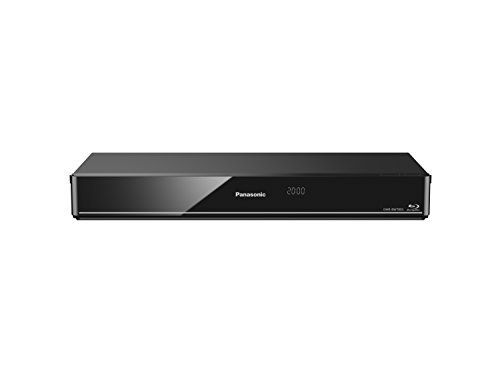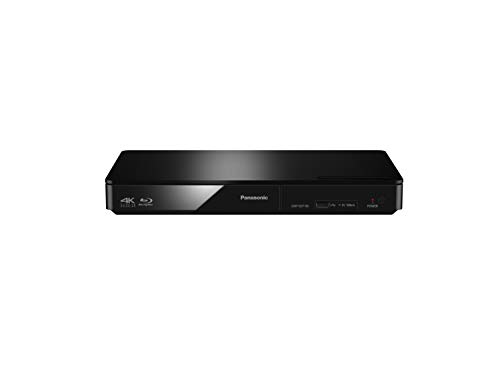DVDs and Blu-ray discs have been the mainstay of physical media for watching movies and TV shows for years. While both formats serve the same purpose, there are significant differences in their technology and capabilities. Understanding these basics helps shed light on the DVD vs. Blu-ray debate and aids in determining which format reigns supreme.
The DVD Format:
DVD, short for Digital Versatile Disc, came onto the market in 1997, revolutionizing home entertainment. DVDs use a red laser with a wavelength of 650 nanometers to read the content encoded on the disc. The standard DVD format has a storage capacity of 4.7 gigabytes (GB) per single-layer disc and 8.5 GB per dual-layer disc. DVD players can play both DVD-Video (movies) and DVD-Audio (music) formats, making them versatile.
The Blu-ray Format:
Blu-ray, introduced in 2006, takes optical media to the next level. It utilizes a blue-violet laser with a wavelength of 405 nanometers, hence the name "Blu-ray." This shorter wavelength enables the laser to read information packed more densely on the disc, resulting in higher storage capacity. A single-layer Blu-ray disc can hold 25 GB, while a dual-layer disc can hold up to a massive 50 GB. Besides its increased storage capacity, Blu-ray also supports higher-quality video and audio formats, such as high-definition (HD) and surround sound.
The Verdict:
Now that you understand the basics of DVD and Blu-ray technology, you may be wondering which format is superior. The answer largely depends on your preferences and needs. DVDs are widely compatible, affordable, and offer decent quality for casual viewers. On the other hand, Blu-ray offers superior video and audio quality, making it the go-to choice for home theater enthusiasts and those seeking a more immersive experience. Additionally, Blu-ray has the advantage of being backward compatible, meaning it can play DVDs, whereas DVD players cannot play Blu-ray discs. Ultimately, choosing between DVD and Blu-ray boils down to your budget, equipment, and the experience you desire.
The Battle of Quality: Unveiling the Video and Audio Differences
When it comes to the DVD vs. Blu-ray debate, one of the key factors that sets these two formats apart is the video and audio quality they offer. As technology continues to evolve, so do the expectations of consumers. Blu-ray emerged as the successor to DVDs, promising superior quality in both visual and auditory aspects. To truly understand which format reigns supreme, it is important to explore the undeniable differences between video and audio.
Video Quality:
DVDs were once hailed as the epitome of home entertainment, providing the means to enjoy movies and TV shows from the comfort of our living rooms. However, as high-definition television sets became more prevalent, DVDs began to exhibit their limitations. Blu-ray, on the other hand, was specifically designed to meet the demands of high-definition displays, offering stunning visuals with its crystal-clear image quality. With a greater capacity for storing data, Blu-ray ensures sharper images, richer colors, and an overall immersive viewing experience.
Audio Quality:
While video quality is essential, audio is equally important in enhancing our entertainment experience. DVDs typically provide standard audio formats such as Dolby Digital or DTS, which deliver decent sound quality. Meanwhile, Blu-ray takes it up a notch with advanced audio technologies like Dolby TrueHD and DTS-HD Master Audio. These high-resolution audio formats provide lossless audio, allowing for greater dynamic range, detailed sound reproduction, and a truly cinematic audio experience. From subtle whispers to explosion-filled action sequences, Blu-ray's superior audio quality adds depth and realism to every moment of our favorite films.
Accessibility and Versatility: The Pros and Cons Compared
Accessibility and versatility are two important factors to consider when comparing DVD and Blu-ray technologies. DVD players and discs have been around since the late 1990s and have become almost universally compatible with all television sets. This means that DVD technology is highly accessible to consumers, as they can easily play DVDs on any television or computer with a DVD drive. On the other hand, Blu-ray technology was introduced in the early 2000s and requires a Blu-ray player to access the high-definition content on the discs. This limited compatibility can be a disadvantage for Blu-ray, as consumers may need to purchase a separate player to enjoy their discs.
However, when it comes to versatility, Blu-ray takes the lead. Blu-ray discs have a significantly higher storage capacity compared to DVDs, allowing for much more content on a single disc. This means that Blu-ray is the go-to format for movies and television shows that require the utmost visual and audio quality. Additionally, Blu-ray offers various audio formats, such as Dolby TrueHD and DTS-HD Master Audio, which deliver superior sound experiences. DVD technology, although sufficient for standard-definition content, cannot match the high-definition capabilities of Blu-ray.
Another aspect to consider is the availability of content. DVDs have been around for a longer time and, as a result, have a vast library of movies, TV shows, and other types of content. This extensive collection makes DVDs more accessible to consumers, as they can easily find their favorite titles in stores or online. On the other hand, Blu-ray technology has a smaller library, primarily focusing on high-definition content. However, with the rise of streaming platforms and digital downloads, the availability of both DVD and Blu-ray content may become more limited in the future as physical media becomes less popular.
Looking Ahead: Is the Future of Physical Media Blu-ray?
As technology continues to advance at a rapid pace, it's natural to wonder what the future holds for physical media. While DVDs dominated the market for many years, Blu-ray emerged as a new and improved format in the mid-2000s, offering superior image and sound quality. However, with the rise of streaming services and digital downloads, some question whether Blu-ray will remain relevant in the years to come.
One of the main advantages of Blu-ray over its predecessor, DVD, is its ability to deliver high-definition content. With the increasing popularity of 4K TVs and the demand for immersive viewing experiences, Blu-ray's superior picture quality continues to be a major selling point. Additionally, Blu-ray discs often include bonus features, such as behind-the-scenes footage and the director's commentaries, that can enhance the overall movie-watching experience.
Nevertheless, the convenience and accessibility of digital media cannot be ignored. Streaming services like Netflix and Amazon Prime offer extensive libraries of movies and TV shows that can be accessed instantly from any device with an internet connection. Furthermore, digital downloads allow customers to own and store their favorite content without the need for physical discs. This convenience, combined with the ever-increasing internet speeds and the proliferation of smart devices, poses challenges to the future of physical media, including Blu-ray.







